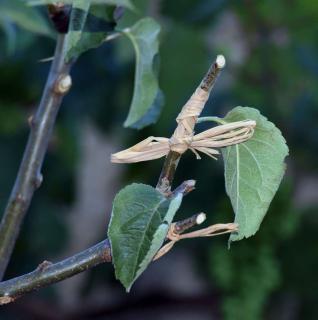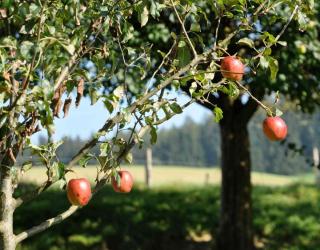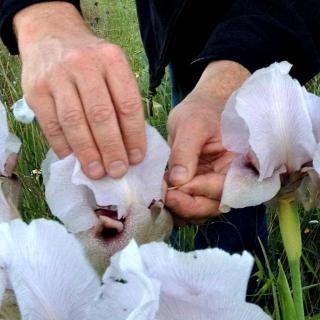

It’s easy to enhance and improve cross-pollination for your target species. These different tips will help you cross-pollinate plants.
 Plant them as close as you can together. Usually pollen flows most easily within a few yards or meters. You can even graft two varieties together! In some areas, it’s common to see a single branch of crab-apple grafted onto a normal apple tree for maximum harvest.
Plant them as close as you can together. Usually pollen flows most easily within a few yards or meters. You can even graft two varieties together! In some areas, it’s common to see a single branch of crab-apple grafted onto a normal apple tree for maximum harvest.More inventive solutions will benefit the community at large:
 Organize your neighborhood to plant different varieties in each garden. As a result, pollen and pollinators will cross over and bring pollen from one variety to the other. And each variety’s harvest can be shared around, hmmm!
Organize your neighborhood to plant different varieties in each garden. As a result, pollen and pollinators will cross over and bring pollen from one variety to the other. And each variety’s harvest can be shared around, hmmm!Note that bees love working along rows. Make sure your hive is set for the bees to easily “enter” into rows instead of having to “cross across” them.
A great many insects are excellent pollinators: hoverfly, bumblebee, honeybee, lacewing, mason bee…
 It’s also possible to replicate the work of the wind and insects with a simple soft painting brush.
It’s also possible to replicate the work of the wind and insects with a simple soft painting brush.
This is what’s done to get prize vegetables like pumpkin and other vegetables! Male pollen from a massive father plant is used to pollinate the female flower of the mother plant to produce offspring that share the qualities of both.
For other squash, such as butternut or kuri squash, you may want to hand-pollinate flowers as well. Indeed, these gourds tend to have male and female flowers at different times, making self-fertilization difficult. If you’ve only got a few plants, hand pollination is the way to go.
In the vast world of iris, hand pollination is a good way to ensure proper parentage.
Some flowers have exclusive pollinators. When the plant is grown where it isn’t native, hand pollination might be needed if the original insect isn’t there.
 In larger orchards, drones can be used to pollinate trees. Drones equipped with special containers and nozzles spray pollen directly on top of flowering trees. Gravity and wind do the rest.
In larger orchards, drones can be used to pollinate trees. Drones equipped with special containers and nozzles spray pollen directly on top of flowering trees. Gravity and wind do the rest.
→ Refresher: what is cross pollination
→ If your goal is the opposite: how to avoid cross-pollination